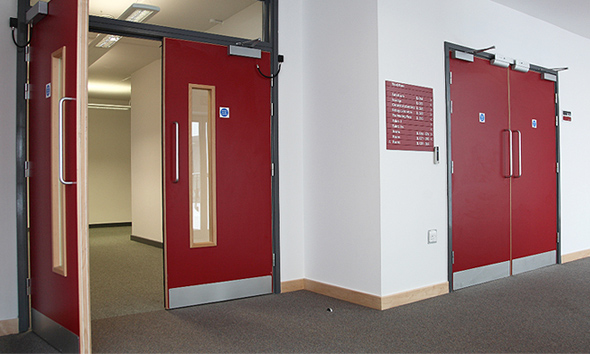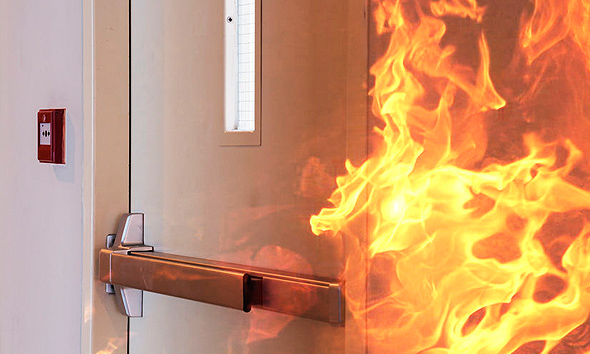 Fire doors and escape doors
Fire doors and escape doorsFire-resisting doors form part of a building’s passive fire protection; they prevent the spread of fire (and, in many cases, smoke), including protecting escape routes. Fire doors must be closed in the event of fire, being either self-closing or kept locked shut.
Escape doors provide safe egress from a building in the event of fire or other emergency. They are not necessarily fire-resisting and, unless they are, should not be referred to as “fire doors”. Escape doors must be easily openable by persons escaping from the building.
Planned maintenance is essential to the continued performance of both fire doors and escape doors.
Any door on an escape route must be readily openable. Accordingly, any such doors should either not be fitted with a lock, latch or bolt or, alternatively, any such fitting must be readily operable without the use of a key in the direction of escape and without requiring more than one mechanism to be manipulated. Doors should open in the direction of escape, although exceptions, including sliding doors, may be permitted where the number of persons using the door is low and they can be assumed to be familiar with the arrangement. Certain types of door, such as automatic doors and revolving doors will require specific features to be usable as escape doors.
Evidence of performance
Evidence may take the form of:
 The test evidence must be applicable to the door or shutter assembly actually installed, as relatively minor differences my significantly affect performance. Correct installation and maintenance are also vital to enable doors and shutters to perform as they were designed to do. Consequently, dhf recommends the use of third party certification schemes covering manufacture, installation and maintenance of fire-resisting doors and shutters; these schemes can give confidence that the installed product will meet the requirements of the regulations.
The test evidence must be applicable to the door or shutter assembly actually installed, as relatively minor differences my significantly affect performance. Correct installation and maintenance are also vital to enable doors and shutters to perform as they were designed to do. Consequently, dhf recommends the use of third party certification schemes covering manufacture, installation and maintenance of fire-resisting doors and shutters; these schemes can give confidence that the installed product will meet the requirements of the regulations.
Fire doors are generally required to be self-closing, except where they are kept locked shut when not in use. “Self-closing” for a hinged or pivoted door means that the door can close from any angle.